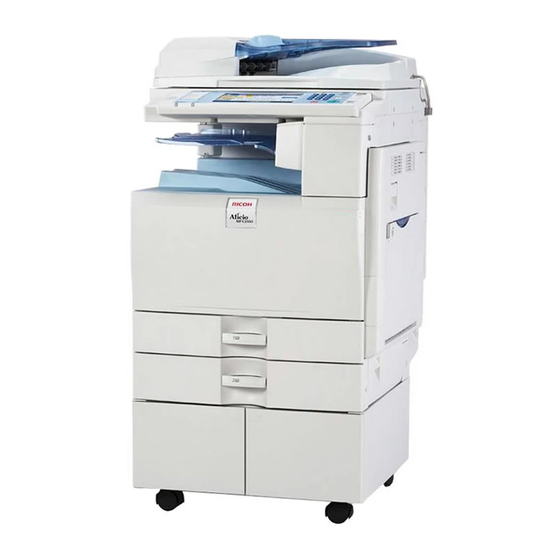Ricoh Aficio MP C6501 Caractéristiques Manuel - Page 14
Parcourez en ligne ou téléchargez le pdf Caractéristiques Manuel pour {nom_de_la_catégorie} Ricoh Aficio MP C6501. Ricoh Aficio MP C6501 27 pages. Papercut ricoh embedded manual
Également pour Ricoh Aficio MP C6501 : Manuel de dépannage (23 pages), Manuel de l'utilisateur (41 pages)

Ricoh Aficio Common Security Features Guide
Data Encryption
As mission critical data traverses the network it is possible for the knowledgeable hacker to intercept
raw data streams, files, and passwords. The advent of wireless network technology, while increasing the
convenience of surfing and printing for millions, also leaves networks vulnerable to attack from intruders
armed with wireless laptops via any access points within range. Without protection, intelligible
information can easily be stolen, or modified/falsified and re-inserted back into the network. Ricoh
Aficio devices are equipped with the following encryption capabilities to reduce these risks.
128-bit SSL/TLS (Secure Socket Layer/Transport Layer Security) Encryption & the Network
Data Protection Unit
Once a user has been granted access to the device
through an active authentication mechanism, Ricoh
devices offer another level of security through password
and data encryption capabilities. By scrambling data
prior to sending it over the LAN for output or storage, it
becomes impossible for hackers to decipher, and subse-
quently gain access to tamper or steal documents under
false pretenses. A series of communications takes place
between the sending PC and the printer or MFP so that
passwords and/or data can be encrypted prior to
sending, and decrypted once they arrive at the device. To
enable this function, the Ricoh device must be equipped
with the Network Data Protection Unit, and the SSL
Certificate must be pre-installed.
The Network Data Protection Unit (NDPU) is available as an option
on some devices and is offered standard on others. The NDPU is
installed in the main unit controller and employs 128-bit strength
encryption to protect data. It works by dividing data sent from a PC
over network lines into blocks of scrambled bits. This function can
be activated when data is to be sent via the hardwired Ethernet
interface, or the IEEE 802.11b Wireless LAN interface.
11
